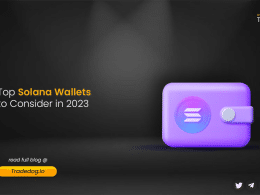Quick Links
In the world of blockchain technology, where innovation seems to outpace comprehension, two concepts have emerged as potential game-changers: chain abstraction and intents. Like digital alchemists, these ideas promise to transmute the complex into the simple, the fragmented into the unified. But what magic do they truly offer?
The Multi-Chain Conundrum
The proliferation of blockchain networks is an inevitable consequence of the technology’s evolution. As teams and developers seek to optimize for specific use cases, we’re witnessing the birth of numerous chains, each tailored to particular applications. This specialization brings benefits in terms of performance and functionality, but it also introduces significant fragmentation in the user experience.
Currently, users navigating the blockchain ecosystem face a myriad of challenges. They must manage multiple wallets, each corresponding to different chains. The process of moving assets between these chains often involves complex bridging operations, exposing users to additional security risks and fees. Moreover, each chain typically requires its native token for gas fees, further complicating the user experience. This fragmentation not only affects individual users but also creates silos of liquidity and functionality across the blockchain landscape.
The concept of chain abstraction has emerged as a potential solution to these challenges. At its core, chain abstraction aims to create a unified interface that shields users from the underlying complexity of interacting with multiple chains. This approach seeks to provide a seamless experience akin to using the internet, where users are largely unaware of the intricate protocols enabling their online activities.
Chain abstraction encompasses several key components, each addressing a specific aspect of the multi-chain complexity:
- Universal Accounts: This concept envisions a single user account that can interact across multiple chains. Instead of managing separate wallets for each network, users could potentially access all their assets and execute transactions on various chains through a unified interface.
- Liquidity Aggregation: One of the most significant challenges in a multi-chain environment is the fragmentation of liquidity. Chain abstraction aims to create mechanisms for aggregating liquidity across chains, enabling more efficient asset transfers and potentially reducing slippage in cross-chain transactions.
- Gas Abstraction: The requirement to hold native tokens for gas fees on each chain is a significant barrier to seamless user experience. Gas abstraction seeks to allow users to pay transaction fees in any token they hold, or potentially even abstract away the concept of gas entirely from the user’s perspective.
- Cross-Chain Execution: This component focuses on enabling applications to operate across multiple chains without requiring users to manually bridge assets or switch networks. It aims to create an environment where the underlying chain interactions are handled automatically based on the user’s intent.
Intents: Reimagining User Interaction
While chain abstraction focuses on the infrastructure layer, the concept of intents addresses the user interaction layer. Intents represent a paradigm shift in how users express their desired outcomes in blockchain interactions. Instead of manually executing a series of transactions across different protocols and chains, users would simply express their high-level intent.
For example, rather than navigating through multiple steps to swap one token for another across different chains, a user might simply express the intent to “exchange Token A for Token B at the best available rate.” The system would then handle the complexities of finding the optimal path for this exchange, potentially leveraging multiple chains and protocols to achieve the best outcome.
This intent-based model relies on sophisticated “solvers” – algorithmic agents that compete to fulfill user intents in the most efficient manner possible. These solvers can leverage their knowledge of various protocols, liquidity sources, and market conditions to optimize the execution of user intents. This competition among solvers can lead to better outcomes for users in terms of price, speed, and overall efficiency.
The Synergy of Abstraction and Intents:
When combined, chain abstraction and intents have the potential to create a transformative user experience in the blockchain space. Chain abstraction provides the underlying infrastructure that enables seamless cross-chain operations, while intents offer an intuitive interface for users to interact with this complex system.
This synergy could unlock new possibilities in DeFi and beyond. Complex strategies that currently require deep technical knowledge and multiple manual steps could be distilled into simple intents. For instance, a user might express an intent to “maximize yield on my stablecoin holdings while maintaining a specific risk profile.” The system could then automatically allocate assets across various lending protocols, liquidity pools, and yield farming opportunities across multiple chains to achieve this goal.
The Road Ahead
The concepts of chain abstraction and intents represent a significant evolution in blockchain technology, potentially bridging the gap between the complex, fragmented landscape of today and the seamless, user-friendly environment necessary for mainstream adoption. As these ideas move from theory to implementation, we can expect to see a new wave of innovation in user interfaces, cross-chain protocols, and decentralized applications.
However, realizing this vision will require collaboration across the blockchain ecosystem. Developers, protocol designers, and user experience experts will need to work together to create standards and best practices for chain abstraction and intent-based interactions.









